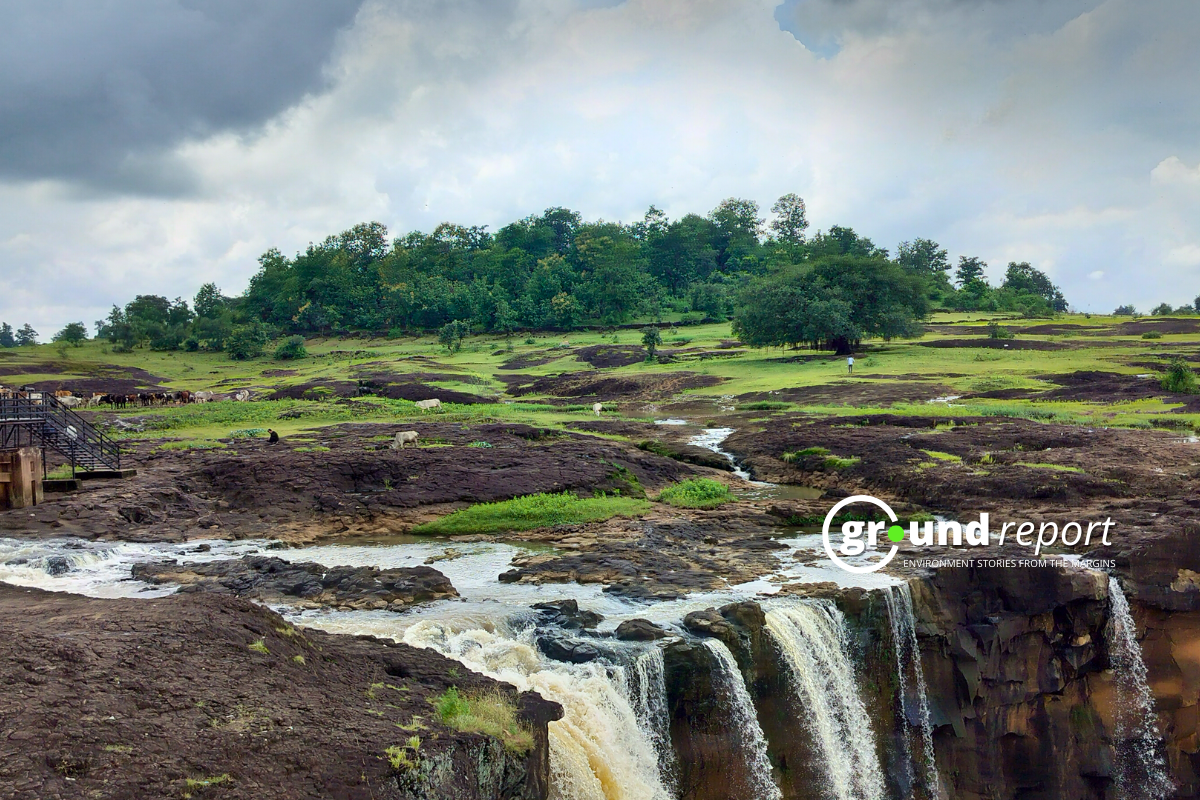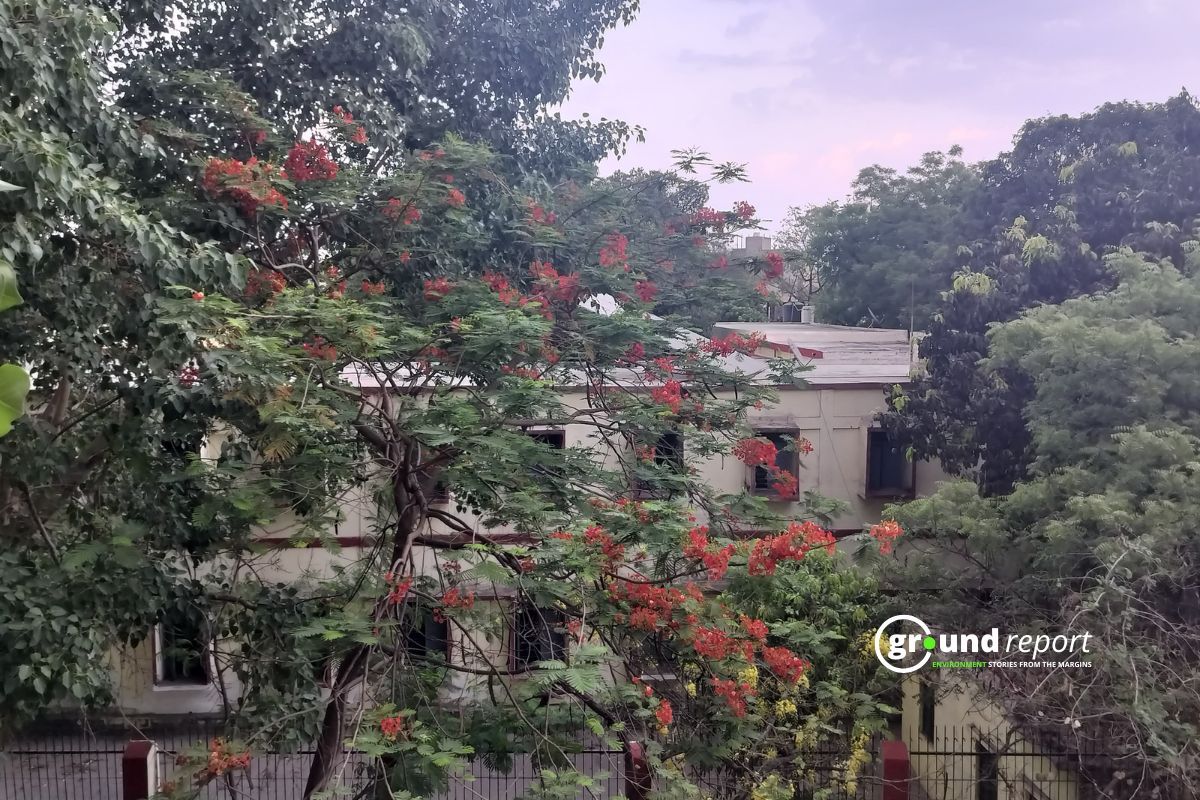Unprecedented rainfall in Jaisalmer has caused severe flooding, submerging a major solar park and threatening the Great Indian Bustard (GIB) hatching area and numerous villages. The heavy downpour led to overflowing ponds and reservoirs, leaving low-lying areas and infrastructure underwater.
The solar park, now six feet underwater, is located in a Rann area a few kilometers south of Pokhran, including the Dhirubhai Ambani Solar Park at Dhursar village near Pokhran in Jaisalmer district, a 40-megawatt photovoltaic power station commissioned in 2012. Covering 350 acres and using 500,000 Cadmium telluride photovoltaics (CdTe) modules, this solar park is a key part of India’s solar energy goals in the Thar Desert. The heavy rains have impacted its operations, raising concerns over solar power generation in the region.
Who thought of such scenario ? A solar park under 6 feet water in Jaisalmer.
It is commissioned into a Rann area, just few km south of Pokhran (Rann is even in the name of Pokhran). Unprecedented rainfall in Jaisalmer is yet to settle down, low laying areas submerged. pic.twitter.com/M5cM9jFgmp— Sumit Dookia (@sumitdookia) August 20, 2024
Record-breaking rainfall
Jaisalmer has had the highest rainfall in northern India after Uttarakhand’s Bageshwar, receiving 134 percent more rainfall than normal from June 1 to August 11, 2024. The district has already received 259.9 mm of rainfall this year, far surpassing its usual monsoon season average of 176.9 mm. The intense rainfall has caused the walls of the historic Sonar Fort, a hallmark of Jaisalmer, to collapse.
The extreme weather contrasts with Jaisalmer’s historically arid climate, which usually sees low rainfall during the southwest monsoon. However, the district has seen a shift in weather patterns, with heavy rains leading to frequent flooding. For example, in 2015, Jaisalmer received 90% more rainfall than usual, marking the beginning of this trend. Abnormal rainfall continued in 2017, 2019, and 2020.
Increased rainfall in Jaisalmer continued in 2021, with the region receiving 273.5 mm of rain during the monsoon—69% more than the usual 162.1 mm.
In 2022, Jaisalmer recorded 346.7 mm of rainfall during the monsoon, almost double the normal 176.9 mm reported by the Jaipur Meteorological Centre. This amounted to a 96 percent increase, reflecting a 12 percent rise in the average rainfall over the past decade.
In 2023, western Rajasthan had 42% more rainfall than average, while Jaisalmer had closer to normal rainfall. The region got 202.6 mm of rain, marking a 15% increase over the usual 176.9 mm.
The Indian Meteorological Department issued an orange alert for the districts of Balotra, Barmer, and Jaisalmer, predicting heavy rains. As a precaution, schools in these districts will remain closed on Monday. The torrential rainfall caused a reservoir in the abandoned village of Dhanoa to rupture, sending water into Jaisalmer city, submerging the BSF battalion headquarters and residential areas.
In the Sam region, five tent resorts in Kanoe were damaged by floodwaters. Floodwaters from Barmer Road have spread into Indira Colony, affecting over 80 households. Gadisar Lake in Jaisalmer city has overflowed, causing water to spill through its main gate and inundate nearby areas, including the Chundhi Ganesh Temple in the Kak River floodplain.
The heavy rainfall in Jaisalmer highlights the increasing challenges of extreme weather events. With the Dhirubhai Ambani Solar Park and the GIB hatching area severely impacted, effective disaster management and climate resilience strategies are crucial. As the region battles flooding, the long-term implications for natural habitats and renewable energy infrastructure are a pressing concern.
Keep Reading
Indian agriculture household earns just Rs. 10,218 in a month: Govt
Post-harvest losses still high, reveals data shared in Lok Sabha
Support us to keep independent environmental journalism alive in India.
Follow Ground Report on X, Instagram and Facebook for environmental and underreported stories from the margins. Give us feedback on our email id greport2018@gmail.com.
Don’t forget to Subscribe to our weekly newsletter, Join our community on WhatsApp, Follow our Youtube Channel for video stories.






